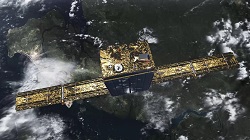SAR antennas get tinier
SAR is a form of radar imaging that uses the motion between an antenna and the Earth's surface to provide finer spatial resolution. Distinctive signal variations are obtained when pulses of radio waves are sent from the antenna that is mounted on a satellite or aircraft. This is a particularly useful form of imaging in cloudy conditions when optical imaging is ineffective. The use of photonic integrated circuit technology in beamforming enables improvements in size, mass and power consumption of antennas. Researchers within the GAIA(opens in new window) (Photonics front-end for next-generation SAR applications) project leveraged integrated optics to design photonic front-ends for several antenna elements. The ultimate design was a modular true-time-delay antenna system in which the beam is steered to the desired angular position by adjusting the optical delay of each radiating antenna element within a photonic integrated circuit, both in transmission and reception mode. This new photonically controlled antenna system formed the basis of a large, deployable SAR antenna. Researchers succeeded in designing optical monolithic technology with low-loss waveguides (less than 0.1 dB/cm) and low-loss fibre-to-chip coupling. Compact design helped achieve time delays between signals received at two different positions in the range of hundreds of picoseconds. Researchers also used optical delay line schemes, enhancing performance of transmitters and receivers. GAIA project activities exceed the current state of the art in antenna technology for SAR applications, reducing mass and size and, therefore, lowering costs. The new SAR antenna technology for future Earth observation missions should help Europe keep its leading position with the Copernicus programme.







